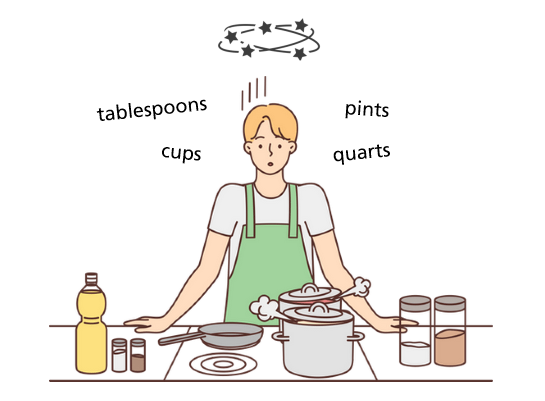Demystifying the math of culinary conversions

Math tends not to be the most popular school subject.
In fact, we often hear at trainings, "I'm not good at math," and "it's so confusing." Well, we are here to demystify the math of converting measurements, like going from teaspoons to tablespoons.
"Dimensional analysis" is an essential skill for anyone cooking at home or on a larger scale, like in the school kitchen. It may sound fancy, but dimensional analysis is just a tool for setting up math problems to convert one unit of measurement to another.
Let's do a simple example! A recipe calls for 1/2 tablespoon of cinnamon. How many teaspoons is that?
Step 1. Identify your conversion factor.
You may already know that there are 3 teaspoons in 1 tablespoon. If you don't have that memorized, you can always look it up on your phone or refer to a chart.
Step 2. Set up your dimensional analysis grid.
A. First, write down the number you are starting with. That's 1/2 tablespoon.
B. Underline the number and extend it out, then add a vertical line so that you have a grid.
____ 1/2 tablespoon_ | ________________
C. Add the conversion factor to the grid. When we have a unit of measurement on the top and also on the bottom, they cancel out. We want the tablespoon measurement to cancel out and leave us with teaspoons. Let's put the tablespoon part of the conversion factor on the bottom.
____ 1/2 tablespoon_ | _ 3 teaspoons _____
1 tablespoon
Step 3. Do the math! Multiply the numbers on top, then divide that answer by the number on the bottom.
(1/2 x 3) = 1 1/2 or 1.5
Divided by 1, the answer is still 1 1/2 or 1.5 teaspoons.


